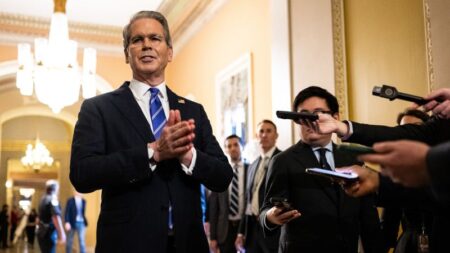**How Tariffs Are Shifting Global Supply Chains**
In recent months, changes in tariff policies, particularly under the administration of former President Donald Trump, have significantly affected global trade dynamics. As a 90-day grace period on Trump’s extensive tariff plan nears its conclusion, companies across various sectors are being compelled to reevaluate their supply chains. The fluctuations in import duties have led to a state of uncertainty that forces businesses to reconsider their production strategies on a fundamental level.
One notable case involves Rick Woldenberg, the CEO of Learning Resources, an educational toy manufacturer based in Illinois. Faced with the imposition of tariffs on Chinese imports, Woldenberg found himself compelled to take drastic action, resorting to legal measures against the government. He expressed his indignation, emphasizing the shocking increase in his company’s import tax from approximately $2.5 million annually to an astounding $100 million as tariffs surged to 145%. As a result, the company has initiated a move away from China to alternative manufacturing hubs in Vietnam and India, where tariffs are comparatively lower.
Woldenberg’s reactions highlight a broader trend amongst American companies grappling with increased tariffs. The current rate of 30% on Chinese imports remains prohibitively high for many businesses, necessitating a pivot in their operational models. The transition to manufacturing in countries like Vietnam and India not only aims to mitigate costs but also to secure a more stable supply chain. However, this transition is fraught with complications. Woldenberg noted the uncertainty regarding whether the new factories can meet production demands, given that numerous companies are making similar shifts.
In Canada, the repercussions of US tariffs are equally concerning. Canadian firms, including those in the food industry, contend with a dual burden: 25% tariffs on their goods imported into the US and matched retaliatory tariffs imposed by Canada on US products. This situation further complicates sourcing and pricing strategies for companies like Cluck Clucks, a Canadian fried chicken chain. The brand relies on specialized equipment sourced from the US. With prices escalating due to tariffs, Cluck Clucks faces challenges not only in maintaining supply but also in preserving menu options, leading to a strategic decision to limit its offerings.
The impact of tariffs extends beyond North America. For instance, Spanish olive oil producer Oro del Desierto is also feeling the strain. With tariffs on its exports to the US currently set at 10%, the firm recognizes the inevitability of passing these costs onto American consumers. This development may lead to reduced volumes shipped to the US as exporting becomes less profitable, compelling the company to explore markets in other regions, where they can find greater profitability.
The overall landscape of international trade is shifting, and experts like Les Brand, CEO of Supply Chain Logistics, underline the complexities businesses face in adapting to new realities. As production shifts sources, companies expend resources researching new suppliers and managing quality control, which detracts from their core business objectives. The intricacies of knowledge transfer for new manufacturing teams add another layer of difficulty. Moreover, as businesses strive to navigate through these changes, many find their profit margins increasingly compromised.
In summary, the shifting terrain of global supply chains due to escalating tariffs illustrates the vast implications for international commerce. Organizations like Learning Resources and Cluck Clucks exemplify how tariffs compel significant operational changes that require strategic foresight and adaptability. As businesses endeavor to maintain consumer relations while grappling with evolving market conditions, both immediate and long-term impacts of these tariff policies remain uncertain. As Woldenberg poignantly remarks, businesses must make informed decisions amid fluctuating circumstances, highlighting that merely hoping for better outcomes is not a sustainable strategy.











